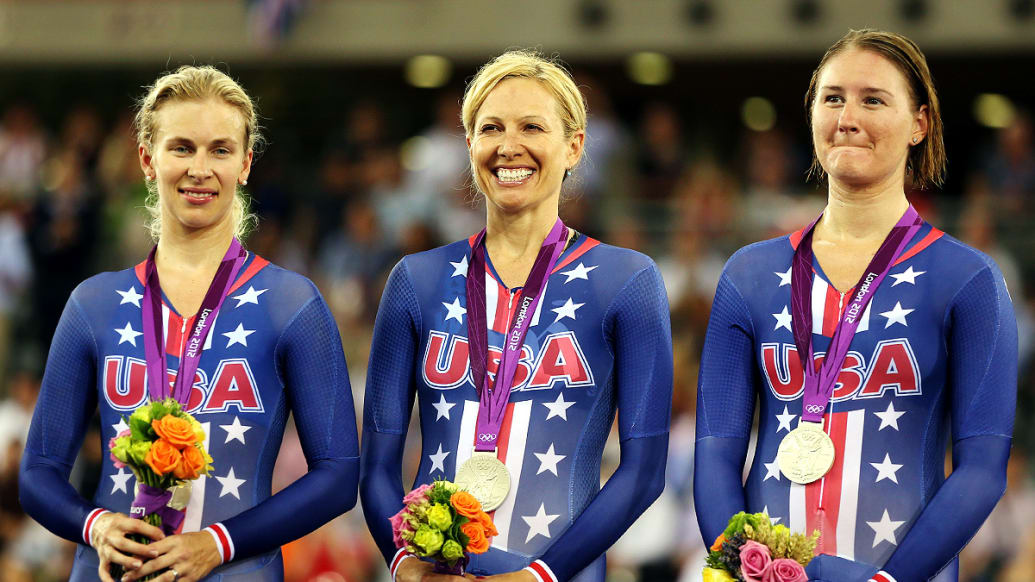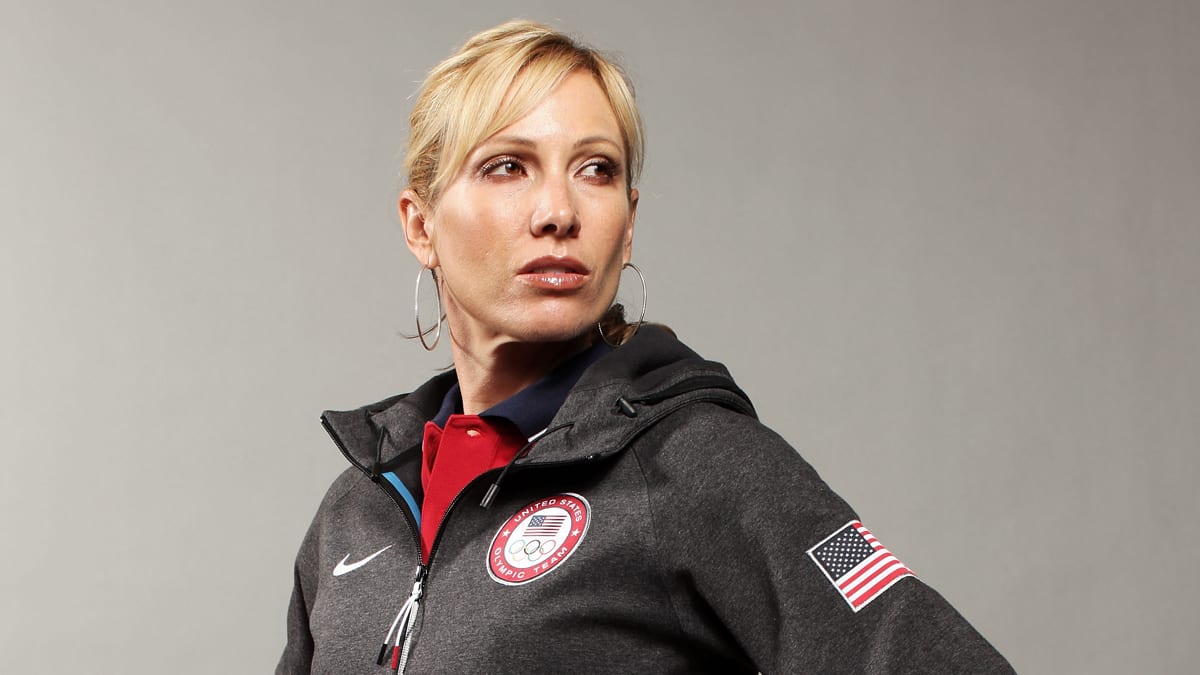Correction: An earlier version of this article stated that the Model Alliance is a union. In fact, it is a non-for-profit labor organization for models.

This week, the world watched as American Dotsie Bausch won a silver medal for cycling in London. But as she rounded that track at top speed, it was easy to forget the girl she used to be: the drug user and successful runway model who weighed 90 pounds and suffered from severe anorexia.
I became a model at 14. I had won a contest in Seventeen Magazine and was flown out to California to do the five-day shoot. Immediately afterward, I dropped out of traditional high school and moved to Miami the week I turned 16. My home was a shared townhouse with two other models and a photographer that beat his girlfriend in front of me. I was the youngest. I had a futon bed laid flat on the ground and a plastic crate as a nightstand. I worked as a model 4 to 5 days a week (12-14 hour days) and watched Star Trek Voyager while eating 6" vegetarian subs at night. My neighbor, also a model, was a mother and bulimic. Her baby boy soon picked up on her vomiting and started to mimic gagging sounds each time he was fed.
When Dotsie Bausch began modeling she was already suffering from an eating disorder. The thinner she got the more money she made, “up to 40 grand in a month.” Then she started using drugs.
Countless questionable things happened to me during my life as a model. The time in Mexico they asked me to go topless at age 16 to make the photograph better. The time in Italy the photographer screamed in my face because the pool was too cold and I had turned blue. The time the head of my Miami agency called me up to her office to say I was not worth the rate her bookers were now able to charge for me. She was taking 40 percent: 20 percent from the models and 20 percent from the clients. These are all forms of abuse and should not have been legal. There was no doctor to call for my beat-up roommate. No therapist for my neighbor. No governing body for me to reach out to when things started to make me uncomfortable on set. I had no phone number I could dial and say, “Hey, I’m a model and I’m really young and I’m feeling weird about what is happening, can you help me?” And I wasn’t about to tell my parents and have to stop. I had total freedom and I was 16. I was in magazines and making lots of money. I didn’t want to stop. Not yet.
Bausch and I were models at exactly the same time in the same city. I was a print model. She was a sleek runway girl. I moved to NYC the fall of my 17th year, living in a models’ apartment in Murray Hill— five girls to a two bedroom, one bath. We were charged by our agency over two thousand a month each. One February I was part of Fashion Week. Not in a show because I was only five-foot-seven, but Bausch at five-foot-nine may have been inside, on the runway. I was hired to stand outside the tents, handing out chocolates in the middle of winter as an ambassador for Vogue.
I quit modeling the month I got my first cover. It was the cover of Sassy magazine, the prom issue. As I waited for the messenger to deliver a copy, I remember looking out at the mattress I had put outside hoping the February weather would kill the bedbugs. When the magazine arrived, the pinnacle of my modeling career, the girl in the photo seemed sad. It all seemed so sad. There I was playing the part of a happy teenage girl going to her prom, something I had never actually been to.
A few years later I became an actor and part of a union, the Screen Actors Guild. The union provided healthcare and pension benefits, on-the-job hour restrictions, counseling services, and a phone number one could call to specifically report sexual harassment or abuse. This is what actors have, but what about models? What about Dotsie Bausch, who dropped from 139 to 90 pounds and considered suicide? The fashion world typically turns a blind eye to girls in her situation. Did that have to happen? Because of SAG’s healthcare benefits, when I needed a major operation on my liver it only cost me the fee of the private room. Now this is not a perfect system or a perfect union. My illness left me unable to work as an actor and as soon as I stopped earning at a top-tier level I was dropped from SAG’s healthcare program right when I needed it. But it was better than what I had as a model (which was nothing) and it is better than what models have today. Models are still working under the “old studio” system—owned by their agencies and rented out to magazines and designers. Even though there have been movements to change this, such as Sarah Ziff’s campaign to create the Models’ Alliance, nothing has been effective. Why? A young, innocent worker is an ideal worker.
Let me pause here for a moment to acknowledge some good news. In May, Vogue announced that is was suspending its use of models under the age of 16 and those that appeared to have active eating disorders. This includes all of its 19 international editions and Teen Vogue. That also leaves the designers and their call for younger, thinner girls and boys. Also, Julia Bluhm, a 14-year-old ballerina, tired of her fellows complaining about how they looked compared to girls in Seventeen. She started an online petition that asked Seventeen to stop the practice of Photoshopping their models and promoting unrealistic body image. Some 85,000 signatures later, Seventeen released a statement saying it will “Never change girls’ body or face shapes. (Never has, never will).” Seventeen agreed with Bluhm’s changes, though they denied her accusations were ever policy in the first place. Bluhm celebrated, as she should, showing that grassroots activism created an important conversation. Finally, HBO recently premiered a documentary on this very subject, About Face: Supermodels Then and Now. One of the ladies featured in the documentary said: "When drugs came on the scene, I could see the track marks on Gia's arms. I feel somewhat responsible. The whole industry was. Of using these girls when we were aware of the heavy, heavy use of drugs. We maybe exploited these girls because it also brought a certain look to the photograph." Gia Carangi died in 1986 at age 26 of complications from AIDS. She had contracted HIV from an infected needle. This did not have to happen.
When we watch Bausch compete in London, let us remember how far she has come. Back from near death, a young model without the right support. There are so many more like her working in fashion today—girls and boys as young as 12, 13, 14. They need to be protected. In March both screen actors’ unions, SAG and AFTRA, finally merged. I propose that SAG-AFTRA opens its doors to protect their younger sisters and brothers, the fashion models. Because while some of us, like Bausch, have the ability to make a grand comeback, why should we have to go down the rabbit hole in the first place?

